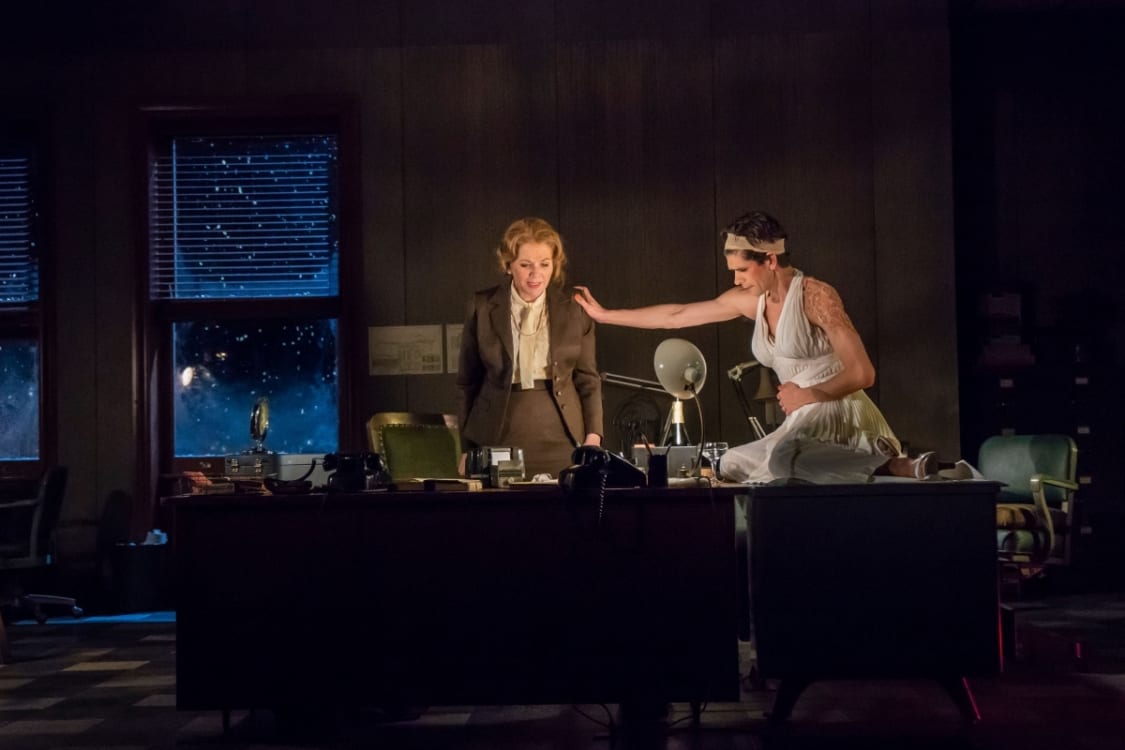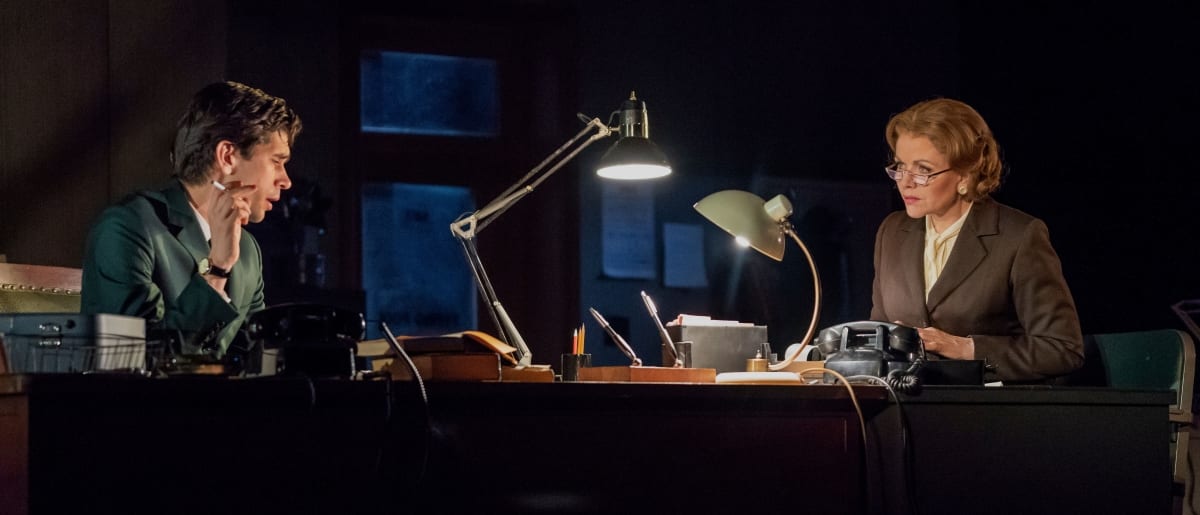Anybody who goes Anne Carson’s new, beguiling play, expecting a tight narrative about the lives of Marilyn Monroe and Helen of Troy, will come out disappointed. There’s a narrative, yes—it more or less follows Marilyn Monroe as she moves to Los Angeles to shoot Clash by Night—but it’s buried under a framing device and obscured by poetic detours, so much so that the piece feels more like a staged poem than a play. This makes sense: who isn’t familiar with the myths of Helen and Norma Jeane? A careful rehash of either of their lives would read as boring and redundant. Instead, Carson uses the two myths as a jumping off point to examine the position of particularly beautiful women in our society and cultural imagination. In doing so, she’s simultaneously able to offer sprawling and intelligent commentary while providing the most nuanced and achingly empathetic portrait of Marilyn Monroe I’ve ever seen.
We open with Ben Whishaw (if, at this point, he’s a character, it has no name) entering a hyper realistic, 60s style, office building (designed by Alex Eales) and turning on the radio. An announcer recaps the tumults of 1963 and describes the scene in Times Square as the ball drops and the country lurches into ‘64. Shortly after, the acclaimed opera singer Renée Fleming (similarly, at this point, she seems to not have a character) enters, takes up her position at the stenographer’s typewriter, and Whishaw dictates the play, “Norma Jeane Baker of Troy,” to her. Much of the early part of the play follows Whishaw and Fleming as they compose the text they perform. The myths of the two heroines collapse together—Arthur Miller assumes Menelaus’ epithet and becomes Arthur, King of New York and Sparta. Truman Capote fills the role of Greek chorus and Whishaw hops between these three characters and the voice of the writer, all the while appropriating more of Marilyn’s wardrobe.

Whishaw shines under Mitchell’s direction. Her staging fluctuates between realism and more expressionistic movement that requires all the precision of dance, and Whishaw masterfully executes both. He exhibits an intensity of focus, physical control, and effortless naturalism that has no peer. His attention never wavers, he’s one of those special actors capable of projecting energy on every physical and emotional plane.
Paul Clark provides an eclectic, clever score, which so perfectly buttresses the text that it’s hardly noticeable. The composer allows Ms. Fleming to do much of the melodic heavy lifting in the songs, and she doesn’t disappoint, as her singing is predictably superb.
Still, for all these individual triumphs, NJBoT requires effort from the audience. I enjoyed the play least when I tried to think about it in any structured way. Don’t try to follow this piece; you won’t keep up. Sink into the way you’d sink into the mud in the shallows of the Dead Sea—let it envelope you, let the gentle waves wash over you, without fighting. There will be moments where you find yourself submerged and unable to breath, but there will be moments where you slip completely into the world of the piece, and, in that calm, you’ll discover new things about yourself and the two heroines. You can (and should) always think later.

